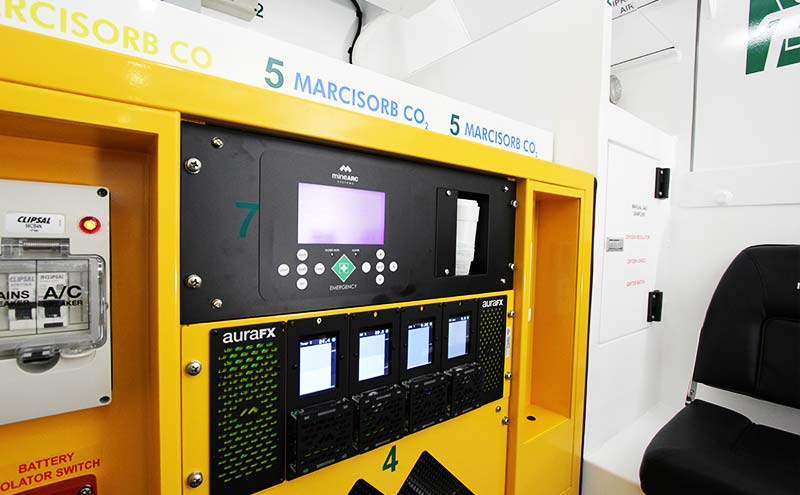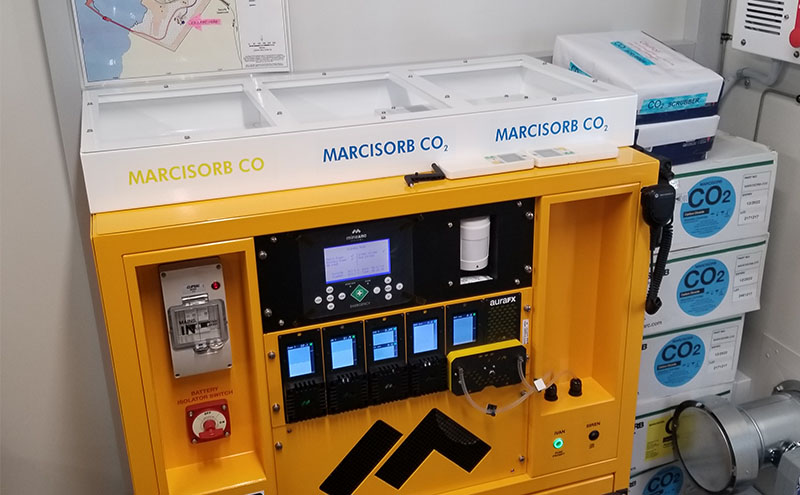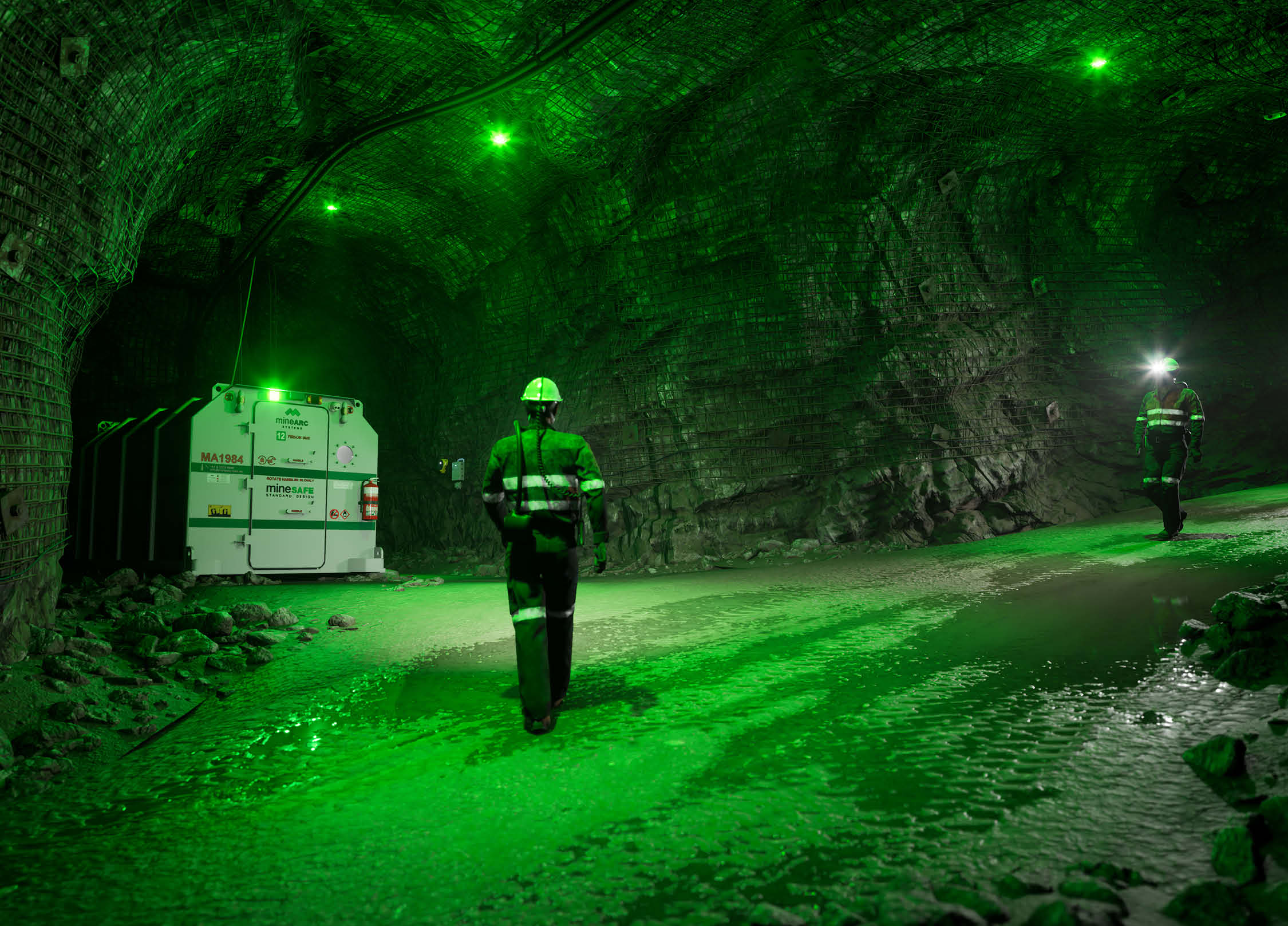Why is it essential to monitor gas levels in a sealed refuge chamber, and how is this done? During entrapment, occupants consume oxygen (O2) and expire carbon dioxide (CO2) and carbon monoxide (CO) as part of their normal respiration. CO can also enter the chamber during occupant entry and if the compressed air intake is compromised. As a result, Internal gases need to be monitored by a digital gas monitoring system or manual gas sampling.
Gas monitoring is an essential aspect of maintaining a life-supporting atmosphere within a refuge chamber.
Monitoring Gases inside a Refuge Chamber
A refuge chamber is essentially an airtight box that restricts natural air from entering the internal atmosphere. Without adequate oxygen, occupants would quickly suffocate. Rough calculations show this could occur within 2-3 hours. A build-up of CO and CO2 can also poison the air, causing many serious symptoms and eventually even death. CO has been referred to as the “Silent Killer” because CO poisoning is the most common type of fatal air poisoning.
Gas monitoring is, therefore, an essential aspect of maintaining a life-supporting atmosphere within the refuge chamber. MineARC Refuge Chambers are equipped with Fixed Digital Gas Monitors and manual Gas Sampling Tubes so occupants can monitor the internal atmosphere and take all corrective measures, such as commencing CO and CO2chemical scrubbing or adjusting the oxygen cylinder regulator, to stay alive during an emergency entrapment.
Digital Gas Monitoring System Options for Emergency Refuge
Aura-FX Digital Gas Monitoring System
MineARC’s Aura-FX Digital Gas Monitoring System is a proprietary fixed gas monitoring unit explicitly designed for MineARC Refuge Chambers to provide a more convenient internal refuge gas monitoring solution.
Aura-FX measures O2, CO and CO2 gas concentrations as standard and can monitor up to 11 gases if required, including;
Aura-FX is also fitted with an environmental sensor that measures ambient temperature (-40 to 85°C), internal pressure (300 to 1,100HPa), and relative humidity (0 to 100%RH).
All measurements and trends are displayed on a series of user-friendly digital screens. In addition, audible voice alarms with procedural instructions will prompt occupants to replace scrubbing chemicals or adjust oxygen supply levels in the refuge chamber as required.
Aura-FX is standard on all new MineARC Refuge Chambers. It is also available to retrofit to most existing chambers during an upgrade or refurbishment.
When utilised as a part of the GuardIAN Intelligence Network, Aura-FX provides real-time gas monitoring data and analysis of the refuge chamber’s overall internal environment via the GuardIAN Refuge Chamber Monitoring dashboard.
Oxygen Digital Gas Monitors
Oxygen is the essential gas for sustaining life. Our bodies are dependent on oxygen for survival; our bodies consume it to produce energy. Loss of consciousness occurs very quickly without an adequate oxygen supply.
Given that a refuge chamber is a sealed environment, it is vitally important to consider how oxygen levels inside are managed. Oxygen levels of the “dead air space” will quickly be consumed, and scrubbing of CO2and CO does not replace the consumed oxygen in an occupied chamber environment. Oxygen, therefore, needs to be continually replenished throughout entrapment. The sources of breathable air to a refuge chamber include compressed mine air, medical-grade oxygen cylinders and, as a last resort, an oxygen candle.
The Aura-FX Oxygen (O2) Gas Monitor measures ambient air oxygen levels within the refuge chamber. O2 must remain between 19.5 and 23% oxygen within the internal environment – vital for occupants’ life support during an emergency. With an accuracy variance of within only 2% of the reading, the O2 Gas Monitor uses a luminescence method, measuring changes in the fluorescence of a special dye within the sensor. The dye is optically excited by an LED light source, emitting light at a rate that changes with oxygen level in the air. The O2Gas Monitor sensor then interprets this as a percentage level.
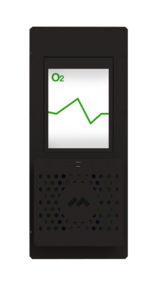
Because gas detection and monitoring are based on optical measurement, no consumable substance is used. Other advantages of this method include high accuracy, fast response and low cross-sensitivity to other gases.
Carbon Monoxide Digital Gas Monitors
Carbon Monoxide is a toxic gas commonly produced by incomplete combustion and can have severe irreversible health impacts at a comparatively low concentration level above 35ppm.
The Aura-FX Carbon Monoxide (CO) Monitor is an electrochemical gas sensor that measures CO concentration by oxidising it at an electrode and then measuring the resulting current.
To reduce cross-sensitivity to other combustible gases, it has chemical filters for Hydrogen Sulfide (H2S), Nitrogen Dioxide (NO2), Nitric Oxide (NO) and Sulfur Dioxide (SO2).
The CO Monitor has an accuracy level within just 4ppm within the reading and a sensor range between 0 and 5,000ppm. MineARC recommends keeping carbon monoxide levels in the refuge chamber below 30ppm.
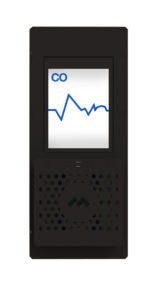
Carbon Dioxide Digital Gas Monitors
The Aura-FX Carbon Dioxide (CO2) Monitor measures CO2 levels in the refuge chamber, ensuring it remains at a safe level of below 10,000ppm. Chamber occupants exhale carbon dioxide as a respiration product, and it needs to be removed from the air using the refuge chamber scrubbing system. This monitor helps to determine when CO2 chemical change-out is required.
The CO2 Monitor features a non-dispersive infrared (NDIR) sensor. Measurement is based on the physical property that CO2 molecules absorb infrared light or particular wavelengths.
By shining light through the target gas and using suitable optical filters, the light detector will give an output that can be converted into a CO2 concentration value.
The sensor provides a long, stable operation life. Major advantages of this method of CO2 detection include eliminated the risk of sensor ‘burn-out’ if exposed to high gas concentrations and low cross-sensitivity to other gases.
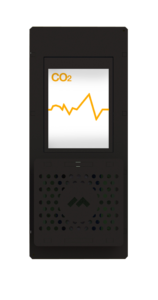
Manual Gas Sampling in a Refuge Chamber
Manual gas detectors also monitor gas levels in occupied refuge chambers. They utilise pre-filled chemical tubes that react to air being drawn through the hand-held pump device to test O2, CO, and CO2 levels.
Gas levels should be manually tested every hour and corrective actions made as required. The specified sampling time for O2 is approximately 1 minute, CO2 approximately 2 minutes, and CO approximately 4 minutes.


